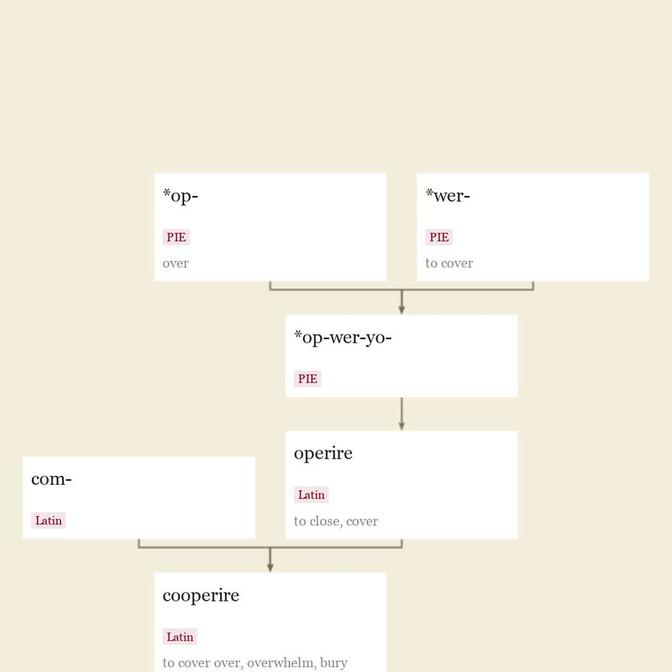curfew (n.)
early 14c., curfeu, "evening signal, ringing of a bell at a fixed hour" as a signal to extinguish fires and lights, from Anglo-French coeverfu (late 13c.), from Old French cuevrefeu, literally "cover fire" (Modern French couvre-feu), from cuevre, imperative of covrir "to cover" (see cover (v.)) + feu "fire" (see focus (n.)). Related: Curfew-bell (early 14c.).
The medieval practice of ringing a bell (usually at 8 or 9 p.m.) as an order to bank the hearths and prepare for sleep was to prevent conflagrations from untended fires. The modern extended sense of "periodic restriction of movement" had evolved by 1800s.
Entries linking to curfew
mid-12c., "protect or defend from harm," from Old French covrir "to cover, protect, conceal, dissemble" (12c., Modern French couvrir), from Late Latin coperire, from Latin cooperire "to cover over, overwhelm, bury," from assimilated form of com-, here perhaps an intensive prefix (see com-), + operire "to close, cover," from PIE compound *op-wer-yo-, from *op- "over" (see epi-) + root *wer- (4) "to cover."
Sense of "to hide or screen" is from c. 1300, that of "to put something over (something else)" is from early 14c. Sense of "spread (something) over the entire extent of a surface" is from late 14c. Military sense of "aim at" is from 1680s; newspaper sense first recorded 1893; use in U.S. football dates from 1907. Betting sense "place a coin of equal value on another" is by 1857. Of a horse or other large male animal, as a euphemism for "copulate with" it dates from 1530s.
Meaning "to include, embrace, comprehend" is by 1868. Meaning "to pass or travel over, move through" is from 1818. Sense of "be equal to, be of the same extent or amount, compensate for" is by 1828. Sense of "take charge of in place of an absent colleague" is attested by 1970.
1640s, "point of convergence," from Latin focus "hearth, fireplace" (also, figuratively, "home, family"), which is of unknown origin. Used in post-classical times for "fire" itself; taken by Kepler (1604) in a mathematical sense for "point of convergence," perhaps on analogy of the burning point of a lens (the purely optical sense of the word may have existed before Kepler, but it is not recorded). Introduced into English 1650s by Hobbes. Sense transfer to "center of activity or energy" is first recorded 1796.
Proto-Indo-European root meaning "to cover."
It forms all or part of: aperitif; apertive; aperture; barbican; cover; covert; curfew; discover; garage; garment; garnish; garret; garrison; guarantee; guaranty; kerchief; landwehr; operculum; overt; overture; pert; warn; warrant; warrantee; warranty; warren; wat; Wehrmacht; weir.
It is the hypothetical source of/evidence for its existence is provided by: Sanskrit vatah "enclosure," vrnoti "covers, wraps, shuts;" Lithuanian užveriu, užverti "to shut, to close;" Old Persian *pari-varaka "protective;" Latin (op)erire "to cover," (ap)erire "open, uncover" (with ap- "off, away"); Old Church Slavonic vora "sealed, closed," vreti "shut;" Old Irish feronn "field," properly "enclosed land;" Old English wer "dam, fence, enclosure," German Wehr "defense, protection," Gothic warjan "to defend, protect."
Trends of curfew
More to Explore
updated on June 07, 2018

